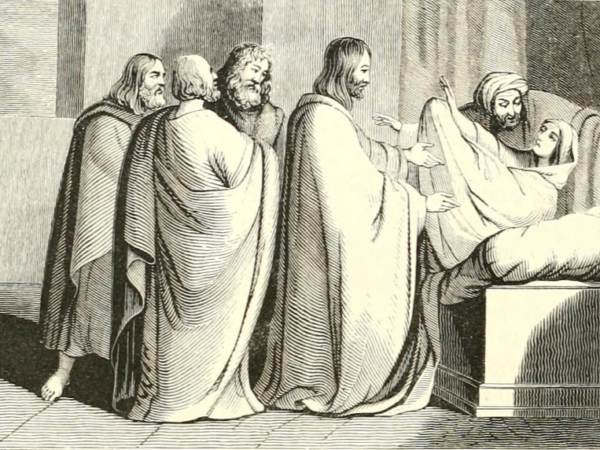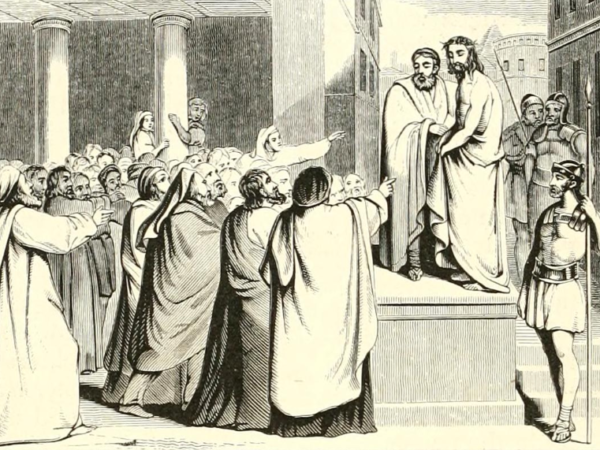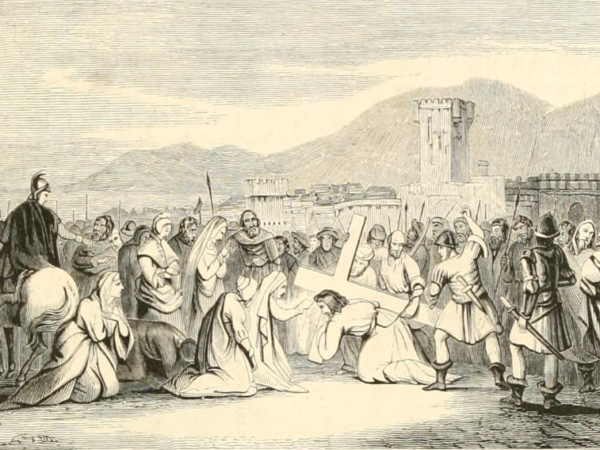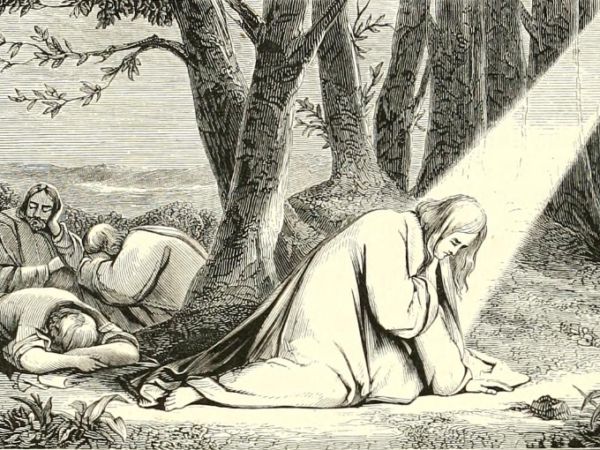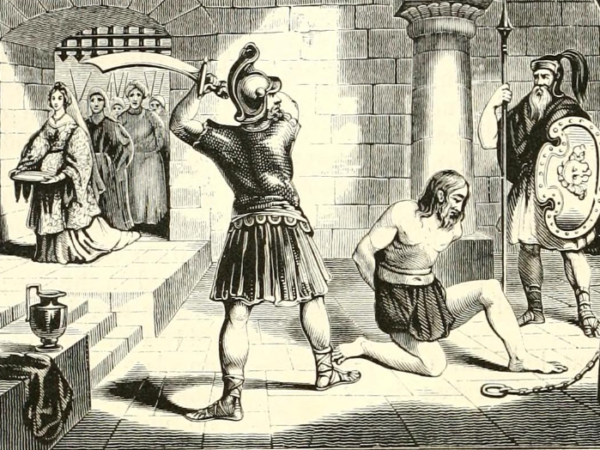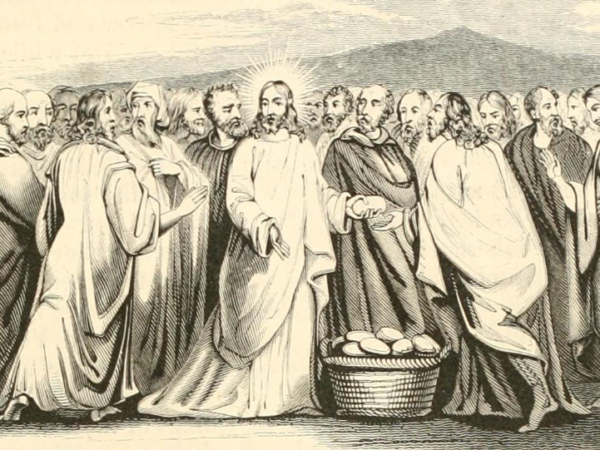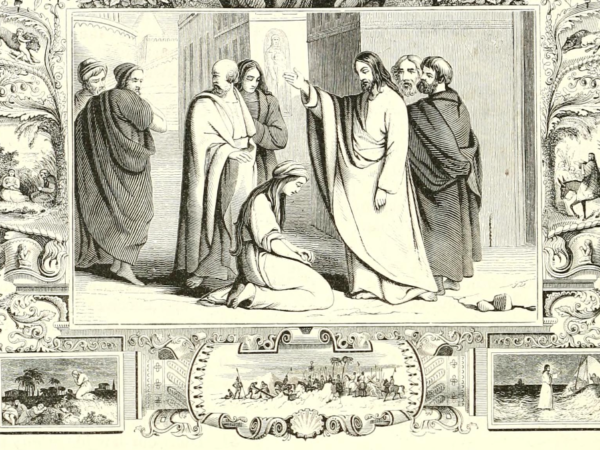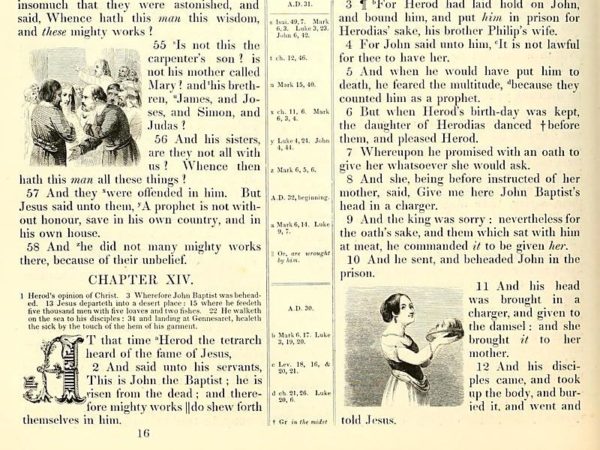The Illuminated Bible
The Illuminated Bible
By Gauri Bhagwat
Introduction
This blog post will focus on one of the most significant American publishing ventures of the nineteenth century, Harper’s Illuminated Bible. The artistic and highly ornamented Illuminated Bible represents the culmination of a half century of work of artists, designers, engravers. It will also reflect on the way text and illustration interact and thus offer readers a glimpse into how this masterful work shapes perceptions of the divine through its imagery.
| Categories | Bible |
| Title | The illuminated Bible : containing the Old and New Testaments. |
|---|---|
| Date | 1846 |
| Place | New York |
| Contributor(s) | Engraver: Joseph Alexander Adams; Artist: J. G Chapman |
| Language(s) | English, Translated out the original tongues |
| Source | https://archive.org/details/illuminatedbible00adam/mode/2up |
| Format | Online; Pdf |
History
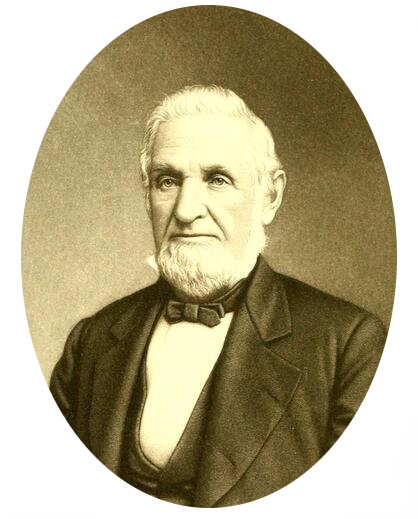
Joseph Alexander Adams, a visionary local printer and engraver, proposed an audacious project to Harper and Brothers. He proposed to produce a Bible of unparalleled grandeur. A bible with more than 1600 illustrations. No previous American-made bible had ever contained more than one hundred pictures. During the 1800s the engravings used to be predominantly on separate sheets bound within text but what made the Illuminated Bible different was the engravings on the same pages as the text.
But achieving this was no easy feat and Adams promised to accomplish this wonder through a new printing process called electrotyping. He is the first person to use this method for printing in America. This process integrated text and imagery to a degree rarely seen since the elaborately hand-illustrated Bibles of the Middle Ages and that was why Harper titled it “Illuminated Bible”.
Once the idea was conceived the Harper brothers decided to print the edition in fifty-four parts ranging from twenty-five to sixty-pages, at twenty-five cents each instead of releasing the book all at once. It was an immediate success. The initial press was sold out quickly, leading to a reprint. In 1846 Harper and Brothers decided to run 25,000 copies of the entire volume.
The following image gallery showcases few of the masterpieces from the gospels in the Bible:
Along with the engraver another major contributor was the artist of the Illuminated Bible, J. G. Chapman, who employed a mishmash of baroque, neoclassical, rococo, and romantic elements which appealed to Victorian parlor culture.
Analysis
Representation of Jesus
Amidst the pages there are numerous portraits of Jesus Christ gracing the text, and serving as visual commentators on his appearance. The illuminated depictions shows the features of the historically Near-Eastern, Jewish Jesus as an Anglo European Caucasian male.
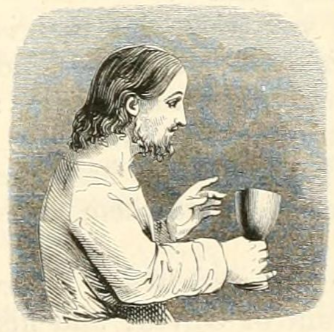
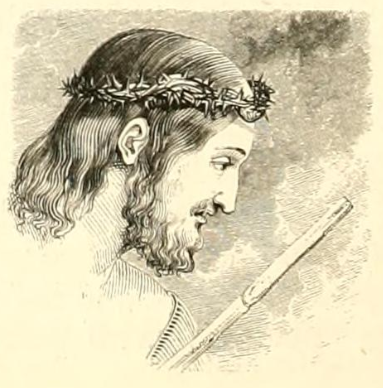
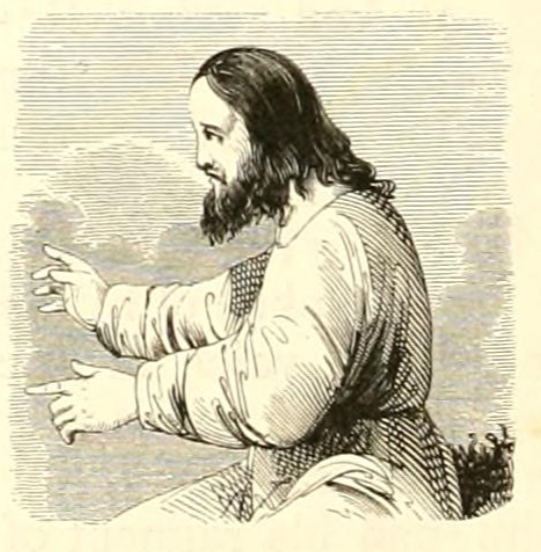
Gospels
This blog delves into the illustrations presented within the Gospel, with a focus on the representation of Jesus as an infant. The focal points of scrutiny is two stories, specifically the “Wise Men from the East,” from the Gospel of St. Matthew, as well as the “Adoration of the Shepherds” from the Gospel of St. Luke.
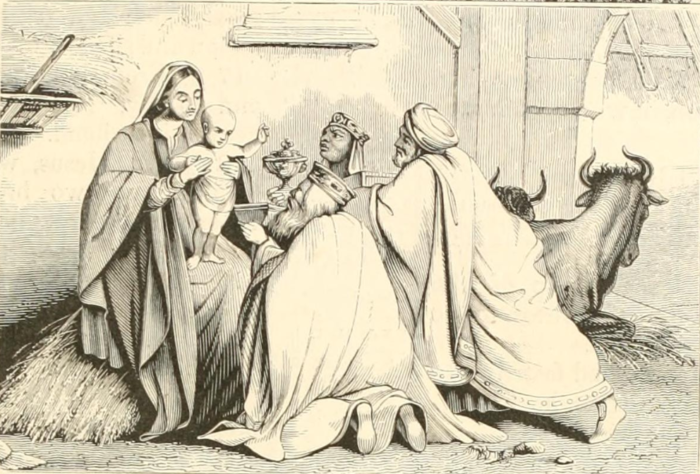
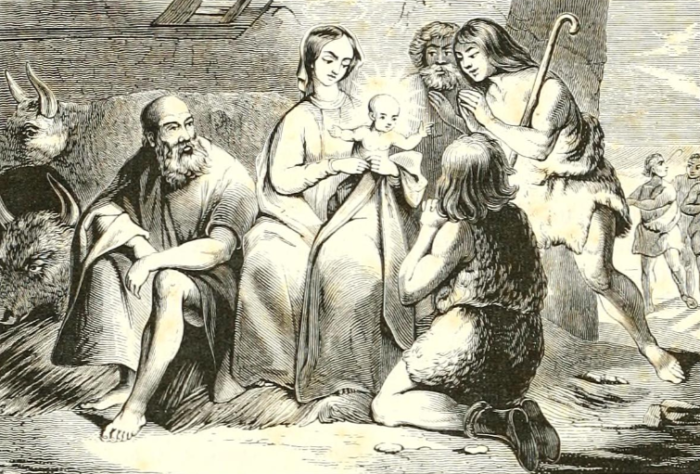
Animal representation is limited to Ox. We can also see hay around the place. The newborn Jesus can be seen on lap of Virgin Mary. What is most peculiar is we can see his hand is raised to give blessings. The lifted hand of the newborn introduces a celestial dimension to the scene. What sets this portrayal apart is the deviation from the conventional depictions of infant.
Image and Text
Back in the 19th century, Bibles were no strangers to illustrations, but they had a particular way of doing things, they kept the pictures on separate sheets. But the Harper brothers and the engraver Adam decided to shake things up. They did not just boast a ton of engravings but throwing them right into the text, playing a visual symphony with the words.
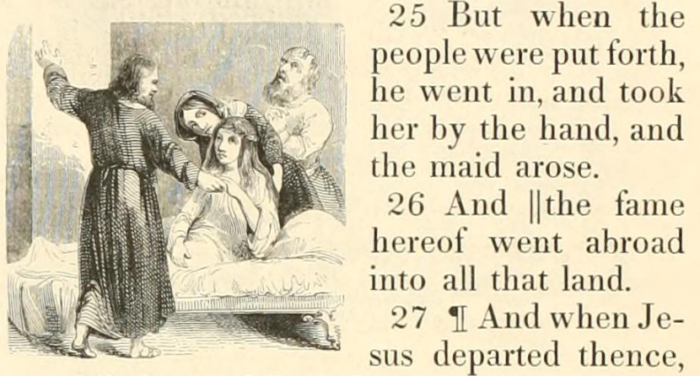
Matthew 9:25
The uniqueness of this Bible is not only in the sheer quantity of engravings but their integration alongside the text, disrupting traditional reading patterns and challenging the very essence of textual comprehension. The imagery does not supplant scripture, rather amplifies the text.
Luke 6:48
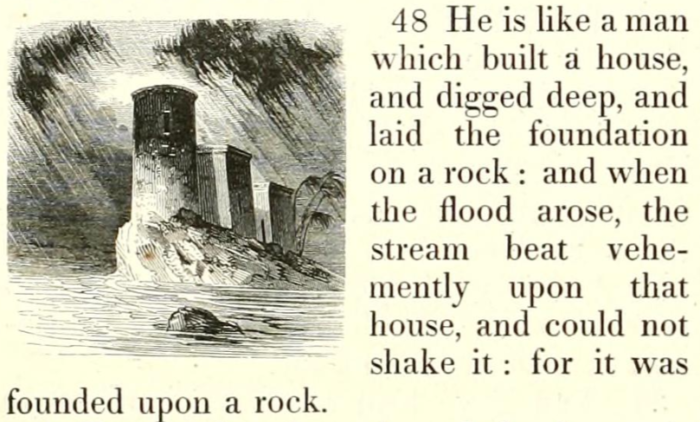
The Illuminated Bible doesn’t tell you what to think; it just adds a visual layer to the story, making you look at the words through a different lens. It’s like turning a black-and-white movie into color—it’s the same story, but the experience is just a bit more vivid.
Marketing Techniques
Harper & Brothers envisioned the Bible as a “Sacred Token,” a coveted possession destined for the center table of Victorian middle-class homes. This was not merely a book but a lavish gift, strategically marketed as a luxurious Christmas present to cater to the burgeoning consumer appetite for opulence.
The 1846 edition, with its gold leaves, embossed covers adorned with engraved names or church buildings, and substantial dimensions (9″x12.5″x3″), weighed a remarkable 13 pounds. These weren’t just physical attributes; they were deliberate choices highlighting the Illuminated Bible’s status as a luxury item meant for display.
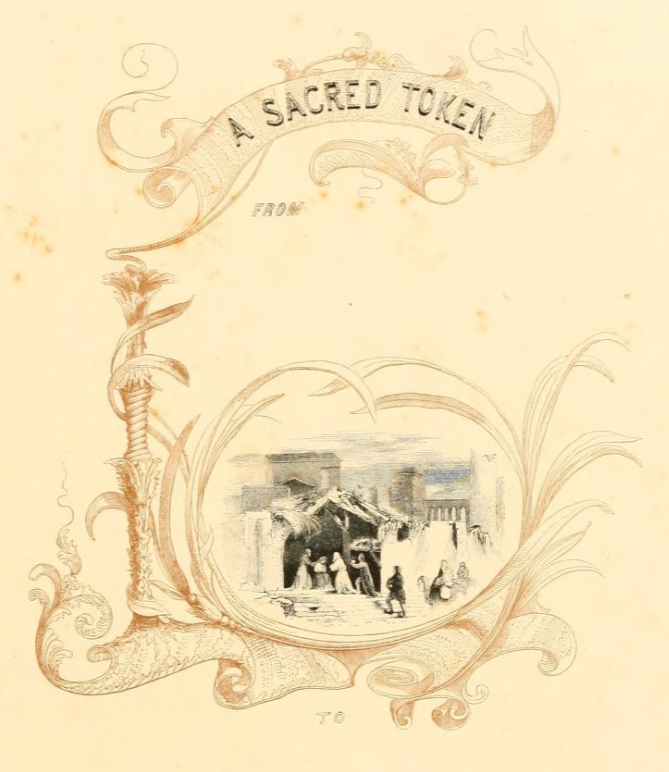
In order to make it as a family heirloom they even added a dedication page and blank pages for ‘Family Record.’ The first, for Marriages, the second is for Births and the third, for Deaths. The Marriage page, bordered in pale blue with scenes from Scripture, set the tone for familial beginnings. The Births page, an exquisite piece in red and black, depicted four poignant scenes—symbolizing the somber flight from Paradise, the nocturnal departure of Joseph, the sorrowful burial, and the ascension of Christ into heaven.
The success of this marketing can be seen through an example from The Houghton Library’s Illuminated Bible, which has personalized text on it which says for “A. C. & Eliza B. Downing,” a couple married in 1846. Its dedication page, reveals that the Downings received their cherished Bible in 1848, likely as a Christmas gift.
In essence, the Illuminated Bible transcended being a mere book and became a family heirloom, a tangible embodiment of cherished moments and a display of luxury.
Scholarly Comments
Scholars such as David Morgan, Michael Leja, and Peter Wosh deem the publication of the Illuminated Bible “a monumental event,” “landmark work,” and “revolutionary”—worthy of a place in the “canon” of mass visual culture and a Bible that “transformed the market for illustrated volumes.” Paul Gutjahr calls the Illuminated Bible the “urtext” of nineteenth-century family Bibles. The consensus of scholars is that Harper’s Bible made an immediate and lasting mark on the publishing world, earned Harper & Brothers and engraver Joseph Adams a lot of money, was beautiful, and reflected the emerging Victorian parlor culture.
Conclusion
This milestone example of American creativity and talent coming together continue to enthrall the scholars and fans, as it’s not just a book; it’s an invitation to elevate the act of reading into a captivating journey, where elegance meets devotion.
Bibliography
The illuminated bible. New York, NY: Harper & Bros., 1846. https://archive.org/details/illuminatedbible00adam/page/n13/mode/2up.
Seijas, Guadalupe. “The Iconographic Representation of the Bible: The Interaction between Text and Image.” Women of the Bible, 2022. https://doi.org/10.5040/9780567703620.ch-002.
Slaughter, Joseph P. “A ‘True Commentary’: The Gendered Imagery of Harper’s Illuminated and New Pictorial Bible (1843–1846).” Journal of the Early Republic 41, no. 4 (2021): 587–619. https://doi.org/10.1353/jer.2021.0076.
“Text-Image Relations from the Perspectives of Text Linguistics, Pragmatics and Action.” Text and Image, 2014, 225–38. https://doi.org/10.4324/9781315773971-15.
